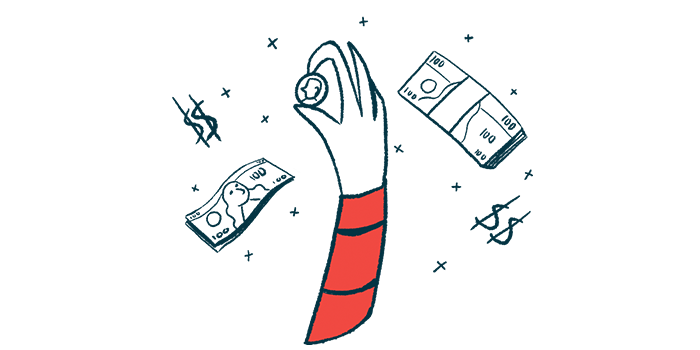Economic Burden of Ultomiris Lighter Than Soliris for aHUS Patients, Study Suggests
Written by |

By shortening the time spent on treatment, Ultomiris (ravulizumab), an approved therapy for atypical hemolytic uremic syndrome (aHUS), may be more effective at reducing lost productivity costs compared with its predecessor Soliris (eculizumab), according to a new study.
The study, “Quantifying the economic effects of ravulizumab versus eculizumab treatment in patients with atypical hemolytic uremic syndrome,” was published in the Journal of Medical Economics.
aHUS is a rare condition in which the over-activation of the complement cascade, a part of the immune system, can lead to the formation of blood clots in small blood vessels, particularly those of the kidneys.
Ultomiris and Soliris, two complement inhibitors marketed by Alexion Pharmaceuticals, now part of AstraZeneca, are currently the only approved therapies by the U.S. Food and Drug Administration (FDA) and the European Medicines Agency (EMA) for aHUS.
Although Soliris is effective and safe, its mode of administration — an into-the-vein infusion every two weeks — can be costly and burdensome for patients and caregivers.
Alexion was able to overcome this problem by developing Ultomiris, a modified version of Soliris that remains active in the body for a longer period of time. With Ultomiris, patients weighing 20 kg (44 lbs) or more are treated every eight weeks. A newer 100 mg/mL Ultomiris formulation, which the FDA and EMA recently approved, requires a shorter infusion time compared with the originally approved 10 mg/mL formulation.
Researchers noted that the reduction of medical costs and lost work productivity due to time spent in treatment (including travel, infusion, and recovery time) are important for patients undergoing treatment with Solaris or Ultomiris.
To find out how much time and lost productivity costs could be saved with Ultomiris compared with Soliris over the course of one year, a team of researchers at Dalhousie University, Broadstreet Health Economics and Outcomes Research, and Alexion conducted a study based on a hypothetical group of patients with aHUS.
In the study’s first part, researchers compared the aggregate duration of treatment administration in four countries with large markets for Soliris and Ultomiris: Germany, Italy, the U.K., and the U.S.
In Italy, only in-clinic treatment was possible; in the U.K., at-home infusion was the only option. In Germany and the U.S., both options were available.
Researchers defined the aggregate duration of treatment administration as the waiting time for medication preparation, infusion time, recovery time, and travel time to and from the clinic. This was calculated for a hypothetical population of 100 patients with aHUS, treated with Soliris at a dose of 10 mg/mL or Ultomiris at a dose of 10 mg/mL or 100 mg/mL.
Data analysis revealed the aggregate duration of treatment administration associated with Ultomiris 10 mg/mL was reduced by 44–52%, and by 69–74% with 100 mg/mL, compared with Soliris among all four countries.
“For example, in the USA, for patients treated in clinic, there was an estimated 70% reduction in aggregate duration of treatment administration with [Ultomiris] 100 mg/mL compared with [Soliris] 10 mg/mL,” the authors wrote.
In the study’s second part, the team compared the annual cost of treatment and lost productivity per patient between Soliris and the two doses of Ultomiris. This was conducted using a cost minimization analysis, a method that compares the costs of different interventions that have the same clinical effect.
Their analysis was based on a previous cost minimization analysis used to determine, from a U.S. payer perspective, the lifetime economic burden of Soliris and Ultomiris for aHUS patients. In the previous study, treatment with Ultomiris 10 mg/mL was shown to reduce direct medical costs by 32% for adults and 35% for children, compared with Soliris.
Data on patient characteristics and treatment patterns from Phase 3 trials (NCT02949128 and NCT03131219) were also used to form assumptions for this part of the study.
Findings showed that lost productivity costs due to treatment in adult and pediatric patients were reduced by 56–60% with Ultomiris 10 mg/mL and by 73–76% with 100 mg/mL, when compared to Soliris.
In addition, the overall discounted annual treatment costs (direct and lost productivity costs due to treatment) were reduced for both formulations of Ultomiris compared with Soliris for adults and children with aHUS.
When costs were discounted, both formulations of Ultomiris were associated with annual total treatment cost savings of $101,370–$101,735 (32.5–32.6%), compared with Soliris.
“In patients with aHUS, [Ultomiris] reduces the aggregate duration of treatment administration and associated lost productivity costs compared with [Soliris]. This study showed that the recently approved [Ultomiris] 100 mg/mL formulation could provide further benefits in this regard,” the authors concluded.
The study noted as a limitation that it was based on a hypothetical group of patients with aHUS. Extensive analysis with real-world patients was suggested to determine the true burden associated with treatment administration.






